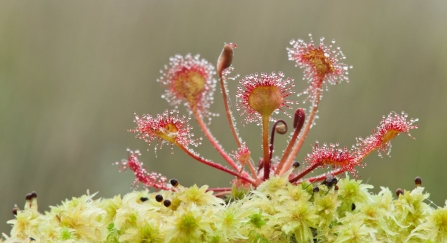This week saw the the Wildlife Trusts publish a report ‘Let nature help – how nature’s recovery is essential for tackling the climate crisis’. Drawing on the latest research, the report shows how a variety of natural landscapes in the UK can store carbon and could absorb a third of UK emissions if degraded habitats were expertly restored, and makes the case for addressing both the climate and nature emergencies together, head on.
The Wildlife Trusts are calling on the Government, industry and local authorities to step-up investment in nature’s recovery and climate change mitigation by:
- Restoring a wide range of land habitats such as grasslands, peatlands and wetlands to store carbon, and identify, map and protect a wide array of ecosystems and restore them locally as part of a national Nature Recovery Network.
- Restoring nature at sea by introducing effective management for our network of Marine Protected Areas and by designating a suite of Highly Protected Marine Areas, thus bringing our oceans back to health and enable them to function properly and absorb CO2 emissions.
Restoring nature also delivers many other benefits. Better natural habitats reduce the risk of flooding, help prevent coastal erosion, improve people’s health and ensure thriving ecosystems which provide the pollinators, soils, food and water which sustain us. Nature is, itself, at risk from climate change – yet its potential to store carbon means it can help us address the climate catastrophe.
The Wildlife Trusts believe that improving nature’s ability to store carbon cannot be at the expense of reducing emissions in other ways – but it is part of the solution. People can consider making sustainable lifestyle choices and Government policy needs to ensure that we significantly reduce emissions in every part of our lives – from leisure and food production to manufacturing and transport.
Craig Bennett, CEO of The Wildlife Trusts says:
“We cannot tackle the climate crisis without similar ambition to meet the nature crisis head on – the two are inseparable. The climate crisis is driving nature’s decline while the loss of wildlife and habitats leaves us ill-equipped to reduce our emissions and adapt to change. It makes no sense to continue destroying natural habitats when they could help us – nature’s fantastic ability to trap carbon safely and provide other important benefits is proven.
“Efforts to cut our emissions must be matched with determined action to fix broken ecosystems so they can help stabilise our climate. Restoring nature in the UK needs to be given top priority – we’re calling on the Government, industry and local authorities to step-up investment urgently.”
Georgia Stokes, CEO of Somerset Wildlife Trust says:
“If we are to be successful we need to change the way we think about nature. Our nature reserves and green spaces provide vital homes for wildlife but they are so much more than that. They are the life support function for our lives, our communities and our local businesses. Restoring nature at a massive scale also happens to be our best hope of storing carbon to mitigate against the effects of the global climate crisis.
Somerset Wildlife Trust’s grassland nature reserves for example cover 252 hectares, capable of storing 554 tonnes of carbon per year. Our peatland reserves, such as Westhay Moor are currently already storing a huge amount of carbon, so it is vital that we keep them wet and healthy allowing them to continue providing this carbon sink, and, given 75% of Somerset is farmed, there is a huge opportunity to ensure that hedgerows and field margins are also making an even greater contribution.
As we recover from the Coronavirus Pandemic, with many of us having relied on nature for our physical and mental wellbeing, we must take time to reset. Somerset Wildlife Trust have worked with many partners to develop a blueprint for a nature based recovery and deliver Somerset’s Nature Recovery Network involving communities across the county, and embedding a Green Recovery in our decision making processes - but there is much more we need to do.”
Read ‘Let nature help – how nature’s recovery is essential for tackling the climate crisis’ HERE.

